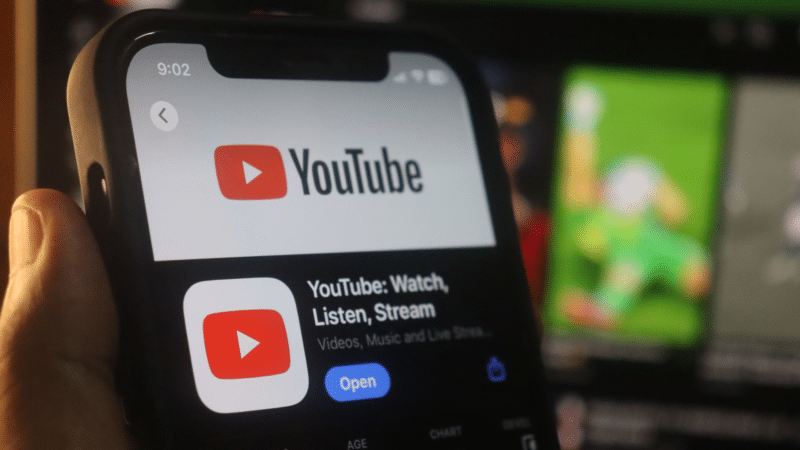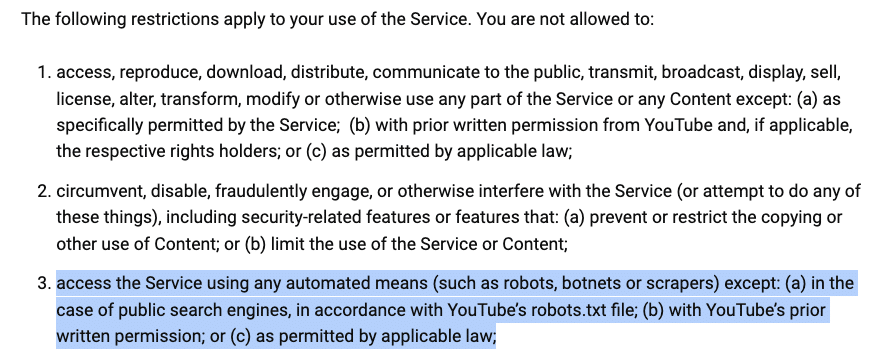The DESCRIBE framework for effective YouTube descriptions

Brands today live in a multi-platform world.
In this article, you will learn:
- Why brands need to get ready for a multi-platform environment.
- How YouTube plays into this.
- How YouTube descriptions can be used to carry meaning and relevance.
- How to use the DESCRIBE framework to improve your description generation.
When Facebook launched, many expected the social media platform would compete with Google in search.
Since then, many other social media platforms and discussion boards have emerged – from Instagram to TikTok, from YouTube to Reddit, from Medium to Soundcloud or Pinterest.
All of them have a search box.
All of them might be platforms users use to search for information, people, brands and products.
Generative AI has been changing the landscape even more lately, introducing powerful generative AI into existing platforms and new tools: ChatGPT, Perplexity, Claude, Gemini, Copilot and Grok, to name a few.
Typical social media sites have their own data sets largely based on users’ content.
Generative AI models, however, leverage large language models (LLMs) that are trained using content from all over the web.
This is why it is critical for your marketing to stay on top of your brand’s presence across your audience’s major platforms.
Let me re-introduce you to YouTubeWhile everybody knows YouTube, many forget that it is one of the largest search engines and also among the top social media platforms worldwide.
If you think about how often you go directly to the video streaming platform to search for something in particular, you will undoubtedly understand its relevance as a tool for information retrieval.
And YouTube keeps growing:

Audience-platform research across different industries suggests YouTube is one of the most important platforms people use.
As a result, a brand’s reputation heavily depends on the content hosted on the platform:
- A bad product review video might show up when somebody searches for your product
- A video comparison between your course and a competitor’s program could drive people to alternative products.
- A poorly performing video on your own channel might get your prospects to reconsider whether they want to do business with you.
But before you now think of recording more and better videos, let’s discuss a very often component of YouTube that’s often overlooked:
The descriptions.
YouTube descriptions: Those little texts that nobody reads?Countless times, you can come across YouTube channels with tens of thousands, sometimes even millions of subscribers.
Many of them have one thing in common…
They pay little or no attention to their video descriptions.
While affiliates are used to populate their descriptions with affiliate links of their equipment, tools or suppliers, many businesses just fill the description box with a one-line summary or a link to their website.
But how could your YouTube descriptions support your brand in a generative AI world?
The value of YouTube descriptions to help train LLMs, at least at first glance, might be questionable, given the fact that it is clearly against YouTube’s Terms of Service to scrape content from the platform, making it impossible for third-party platforms to train their models on YouTube’s data:

However, we know that OpenAI is often reported to have most likely been scraping YouTube to train its model, “Sora.”
If the Google leak has taught us one thing, it is that big tech giants might ignore the rules and use all the data they can (hello, Chrome clickstream data).
YouTube descriptions might also be valuable for AI training, and at least help Google produce better AI Overviews about your brand.
In addition, optimizing video descriptions on the streaming platform will help your videos to get more views.
But how do you write descriptions that set your videos and brand up for success?
Get the newsletter search marketers rely on.
Business email address Sign me up! Processing... The DESCRIBE framework for better descriptionsI’m a big fan of frameworks to structure repeatable processes.
For YouTube, we have developed the DESCRIBE framework, which can help you create YouTube descriptions that will set your videos up for success and support your brand’s online reputation.
Here is an actionable list of elements regarding each part of DESCRIBE:
- Detailed content summary.
- Engage with calls to action.
- Search engine optimization.
- Consistent branding.
- Relevant links.
- Interactive elements.
- Build trust with transparency.
- Evaluate and adapt.
- Provide a clear, concise and context-rich summary of the video content. ChatGPT or Claude might help you achieve this by removing the fluff of a video transcription and shorten it to the minimum.
- Consider listing key takeaways.
- Include questions or prompts to foster interaction.
- Direct viewers to additional resources or related content.
- Encourage viewers to like, share, comment and subscribe.
- Use relevant keywords naturally throughout the description.
- Confirm your title also contains at least 1-2 context-relevant keywords.
- Incorporate hashtags to increase discoverability and connect your video with broader topics.
- Maintain a consistent brand voice and messaging.
- Include branded elements like your brand name and a tagline you usually use.
- Ensure descriptions align with the overall brand strategy.
- Add links to related videos, your website and social media profiles.
- Add a link to the personal brand website of your speaker(s).
- Link to playlists to keep viewers engaged on your channel.
- Use timestamps to create an interactive viewing experience.
- Encourage viewers to engage with polls or comments.
- Disclose any sponsorships or affiliate links.
- Credit sources and collaborators.
- Monitor performance using YouTube Analytics.
- Track metrics like click-through rates, watch time and viewer retention.
- Regularly update descriptions based on performance data and audience feedback.
To make this more actionable, here is a template that you or your team can copy and paste:

